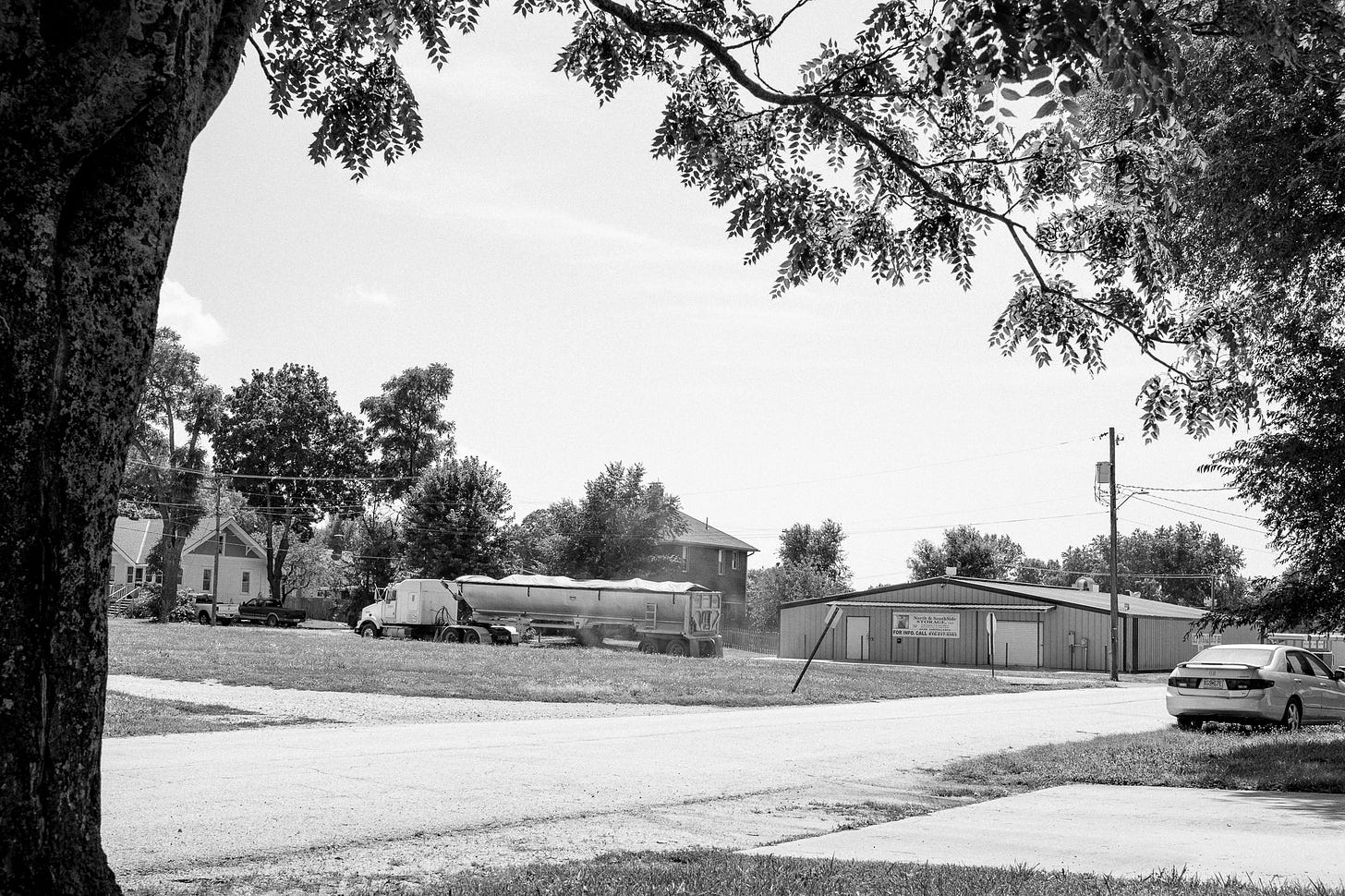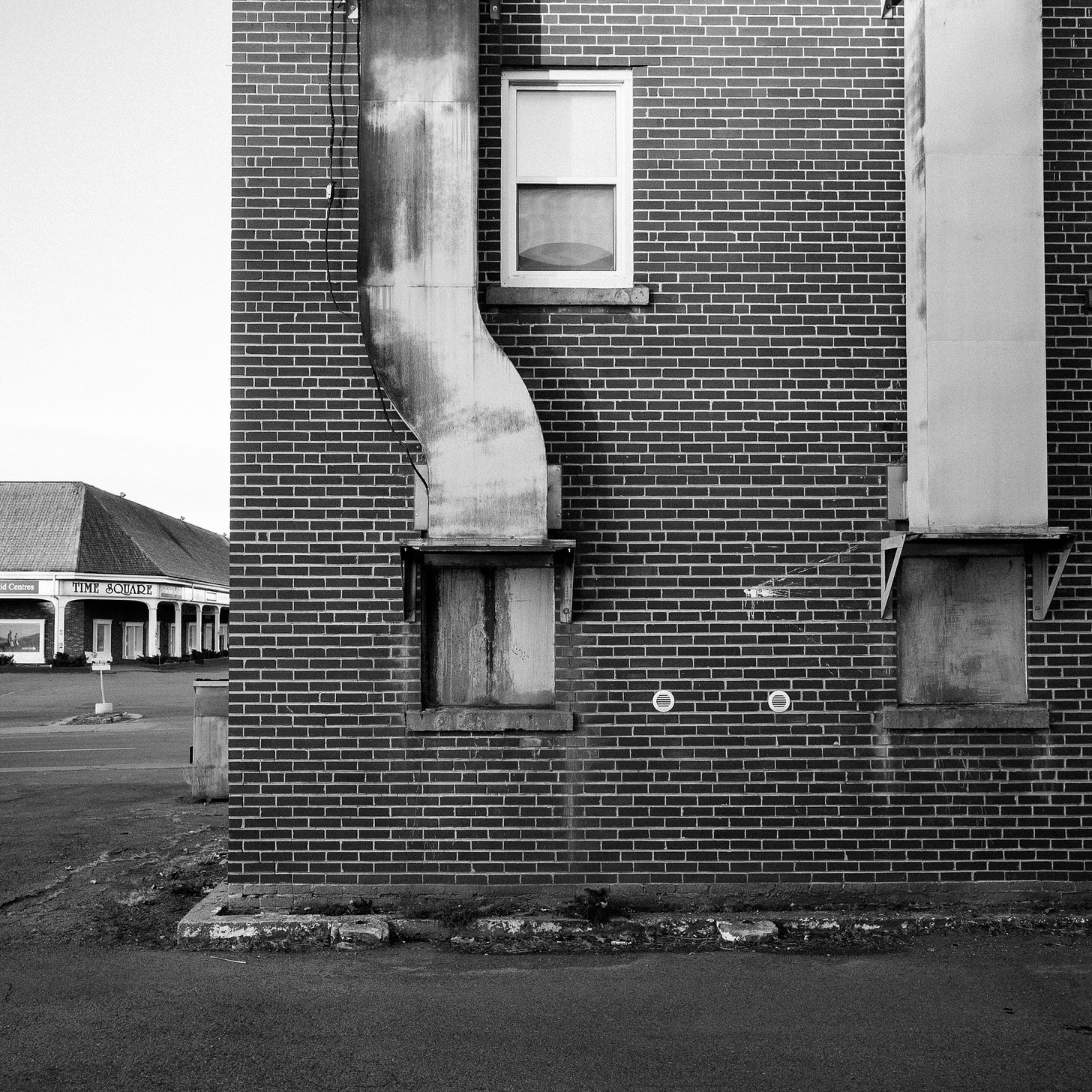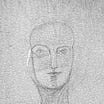Today I will present Matthew Poburyny the author of A Body With A Camera In Relantionship To The World. Matthew is a Canadian self-taught photographer and writer interested in the introspective qualities provided by investigating one’s life and surroundings through lens-based art and journaling.
1. Why photography?
I came to photography about seven years ago when I got sober at thirty and needed to find a passionate interest to occupy my creativity that was removed from what I was doing before, which was music and the conducive lifestyle for alcoholism that was present in the music scene.
There were no early indicators to me at that time about how or why photography came into my life other than having an interest in abandoned buildings, architecture, and historical/archival images I would see in documentaries and so on (plus I have always been an avid walker so it seemed to me a good addition to bring a camera with me on my walks to bring home a record of what I saw that day).
It wouldn't be until later on, when I started questioning where this intense desire to make images, consume photographs, and read texts on photography came from, that I began to see the seeds throughout my past of being someone who liked to look, see, and arrange the elements of the world into formal compositions sans caméra.
Ultimately, photography came into my life as a coping mechanism to stay on the straight and narrow as I recovered from my alcohol addiction and blossomed into an ever-growing passionate obsession with the medium that feels like my true calling in life.
It is a marriage of many interests, including history, place, memory, urban planning, climate change, archeology, form, light, time, introspection, printmaking, sequencing, and bookmaking. This makes it the perfect medium for me to reside in, allowing me to interact with all these different curiosities through one medium.
2. What is your favourite gear? (camera, lens)
I am not much of a gear person, but that doesn't mean I don't love my tools. I have a decent collection of brushes, pens, pencils, and so on that I use to achieve different outcomes depending on the project.
My workhorse is a Nikon Z5 full-frame mirrorless camera, which I use with a myriad of lenses, from my native Nikkor glass (a 28mm f/2.8 and a 40mm f/2) to my collection of vintage M42 lenses, which I love dearly. All of them give me different results and serve various purposes.
I also use a Sony RX100iii 1-inch sensor point-and-shoot digital camera with a great Zeiss 24-70mm f/1.8-f/2.8 zoom lens. I use this camera often when I don't feel like carrying a big camera around my neck.
From there, I have my analogue cameras, which are all 35mm (an Olympus Pen EE2, an Olympus Trip 35, my Yashica Electro 35 GSN rangefinder, and my Zenit 122 SLR), except for my Yashicaflex Model C TLR 6x6 medium-format camera, which I am very fond of.
Due to the cost of film, I predominantly photograph digitally, but when I can afford it, I like to keep some rolls of Kentmere 100 & 400 in the house for black and white and some Kodak Gold 200 for colour.
This summer, I am hoping to shoot mostly colour film using my Olympus Pen EE2 half-frame camera and Olympus Trip 35 to experiment with some ideas I have had about improvisation, jazz, and free-form poetry that I am curious to see the results of, and these cameras are the right tool for.
I am still a musician (a guitarist primarily), and I can attest that different guitars and FX pedals have different riffs or songs in them. I feel the same way about cameras and lenses, treating them as vessels for creative energy to flow through.
3. What are your favourite subjects to photograph?
Subject matter is tricky for me to define, but if I were to summarize it, it would boil down to memory, place, self, and form.
I am infinitely interested in history, but I tend to be obsessed with the history of 19th—and 20th-century North America. I am probably trying to understand where I live and how these two centuries have defined the world I currently inhabit, as well as the extreme industrial, environmental, cultural, technological, and political changes that have happened throughout them and that affect us today.
That would be the place element of my interests, and memory ties in heavily into place as well. Place holds and loses memory, how collective and individual memories intertwine, become fuzzy, overwritten, lost, rediscovered, and so on. Photography has played a fundamental role since its invention in the early 19th century, redefining how we "see" memories, places, and people.
I have ADHD, which comes with a terrible memory and time blindness; combine that with the fact that Alzheimer's runs in my family, and we start to see a more extensive outline for my interest in memory and memories as I may face that eraser of the mind one day (knock on wood).
This leads to my interest in introspection, trying to understand oneself through a medium (the medium at hand being photography), and piecing together in an abstract manner the chaos that is human life.
I had an abusive childhood/adolescence, suffered from intense bullying, and spent a lot of my childhood in and out of the hospital due to my asthma while being a witness to the abuse of not only myself and members of my family but also other children and their parents of whom one of them suffered from spousal abuse/addiction problems.
I grew up and became an addict pretty early on in my life as a coping mechanism to deal with suppressed childhood trauma and my untreated ADHD, which, by the time I got sober, left me with a very messy path back into the past to follow to understand how things brought me to where I was and how to reconcile and move on from these emotional and mental injuries.
All these things converge to create the form of my images and my position in the world as a camera operator. The distances in my images are most affected by my past experiences, leading to forms that often feel isolated, disjointed, busy, or overly arranged, as if someone imposes too much control on a scene that cannot be harnessed. Much of my interest as of late has been in the subject of form via my position to the thing in front of the camera.
4. Can you name a few of your favourite photographers?
To name merely a few of my favourite photographers would be an impossible task, so I would rather name a many few of whose work I can't live without and whose books I either own or am waiting desperately for the publishers to issue reprints of: Mark Ruwedel, Robert Adams, John Gossage, Micheal Schmidt, Joachim Brohm, Thomas Struth, Stephen Shore, Gregory Halpern, Gerry Johansson, Micheal Ashkin, Tim Carpenter, Raymond Meeks, Matthew Genitempo, Bryan Schutmaat, Jem Southam, Walker Evans, Paul Strand, Eugene Atget, Vanessa Winship, Sage Sohier, Mimi Plumb, Barbara Bosworth, Kristine Potter, Fay Godwin, and Rinko Kawauchi to name just a few whose work greatly inspires me.
Just like one's personal preferences are subjective, so are recommendations. Still, there are some books that I own that I absolutely think are treasures and can offer a little something to other photography lovers willing to invest some time with them: Mark Ruwedel's Westward, Raymond Meek's & George Weld's The Inhabitants, Kristine Potter's & Rebecca Bengal's Dark Waters, Rober Adam's The New West, Cottonwoods, Summer Nights, Walking & Beauty In Photography, anything by John Gossage, Bryan Schutmaat's Sons Of The Living, Matthew Genitempo's Dogbreath, Tim Carpenter's Christmas Day Buck's Pond Road & To Photograph Is To Learn How To Die, Jem Southam's The Pond At Upton Pyne, Gregory Halper's King Queen Knave, Micheal Ashkin's Were It Not For, and the list goes on, but these are some books that have resonated deeply with me or changed how I look at photography or the book form for images.
5. What can the Substack community expect from you/your publication in the future?I set out on Substack to teach myself about my photography by writing about it, giving an articulate voice to my images and doing it publically to share that with others and shorten the gap between being seen and heard in the often solo affair that is photography.
Since then, I have started writing essays on photobooks to further broaden my knowledge of the medium through articulating my thoughts on the works of others now and not just my own, and readers can expect this to be a constant thread as long as I can afford my photo book collection (laughs).
I am personally leary about sharing any direct advice on photography with anyone and find places like Substack and YouTube oversaturated with the do's and don'ts, why this and not that, you're doing this wrong, do this instead "content" that I don't plan on polluting that space in any direct way, but will continue to write in my self-reflecting journalistic style on my musings about process and practice leaving my thoughts for others to pick apart as they wish and maybe find some helpful bits of information in as well.
That said, I would like to do interviews (like the one I am doing with you right now) and conversations between myself and other photographers or organize talks between two artists to feature in my newsletter. Still, I am doing everything one step at a time, between working full-time and trying to have a serious creative practice outside of work, marriage, and life, in general, is demanding enough as it is, so I am doing things at my own pace to not burnout or promise more than I can deliver.










Thank you @perfectlight for this wonderful opportunity to share my story with your readers, and for facilitating a space to promote other voices through this excellent series of yours!
Love this. Perfectlight, I think you are doing us all a great service by doing the weekly interviews, so thank you again!
Matthew, thanks for sharing such personal things, I'm sure there are plenty of people who need to hear how you've managed to use your creative side to build a different life. It's inspiring. And on a separate note, ,you are clearly very skilled already, both as a photographer and a writer.